
Review on WS2812B 5050 SMD LED Strip Light - 16.4ft with 300Leds, High Brightness, Flexible, Waterproof, White - DC 5V by Jamonte Hamilton

Nice LED strip that worked as expected
I ordered this LED strip for a house project I'm working on and it looks great. I use an Arduino Nano to control them and they work as expected. The waterproof housing is also practical. These are individually addressable RGB LEDs, meaning you can program each LED with a different color. This differs from SMD5050 or other RGB LED strips where you can set the entire strip to just one color. The packaging of this product is better than others I have ordered. The LED strip came in a box and an anti-static bag. The LED strip has JST male and female connectors on the end. Inside the pocket is another JST connector with exposed wires on the other end. As for the wires, you will notice that the LED strip contains 5 wires. If you intend to use the entire strip and not cut the strip into segments, you just need to connect the three wires that connect to the JST connector. Wire connections: 1. The strip's red wire goes to the positive/V+ power supply2. The white wire of the strip goes to the negative/V-/ground (GND) of the power supply3. The green wire goes to the microcontroller's data pin. If you are using an Arduino/NodeMCU, provide a digital pin that you will use to drive the LED strip. This pin on your microcontroller should be connected to this green wire. Additional white and red wires are connected in parallel to the power lines. They are used so you can always plug in power instead of unplugging. Power Supply: The LED strip needs to be powered by a 5V supply. Coincidentally, the Arduino also has an internal 5V supply, so you can use the Arduino to power the LED strip. However, the Arduino cannot draw enough current for the LED strip. So you can see that when all the LEDs on the strip are lit, their brightness decreases. I would recommend having an external power supply to power the strip during final installation. However, during the prototyping phase, I only use an Arduino to power the LED strip. Wired Connections: I use the following setup when using the Arduino as a power source: 1. Power the Arduino from the USB2 port. Connect the strip's red wire to the pin labeled 5V on the Arduino3 board. Connect the strip's white wire to any pin marked as GND on the Arduino board.4. Connect the strip's green wire to the Arduino's data port (digital pin). It is also recommended to put a resistor (470 ohms) in between. To connect an external power supply I use the following setup: 1. Power on the Arduino using the AC adapter or USB2. Add a large capacitor (1000uF, 6.3V or higher) to the V+/Positive and V-/Negative/GND terminals of the power supply to be connected to the LED strip.3. Connect the red wire of the LED strip to V+/+ of the power supply4. Connect the white wire to V-/GND of the power supply5. Connect the green wire to the Arduino data (digital) pin (along with the 470 ohm resistor) 6. Connect the V/GND of the power supply to the pin labeled GND on the Arduino. This is necessary so that both the LED strip and the Arduino work with the same GND signal. Otherwise, you may find that the LED strip is not working properly. There are also power supplies that can power more than one component. If you use one of these, you don't have to worry about including the ground. For the software library, I used the Adafruit NeoPixel library and the setPixelColor function to set the color of the LED.
- Handy item
- So far so good
New products
Comments (0)
Top products in 🎄 Seasonal Lighting
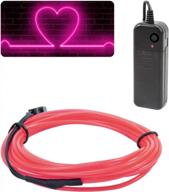
JIGUOOR 9.8Ft Pink EL Wire Light Strip With Battery Pack - Perfect For DIY Party Decorations And Festivities

33 Review
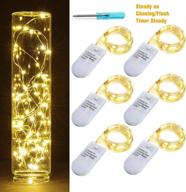
20 LED Timer Fairy Lights With 3 Modes And Warm White Twinkle On Silver Wire - Battery Powered With 2XCR2032 For 4 Days (6 Hours Per Day) - Ideal For Party, Wedding, Christmas Table Decor

45 Review
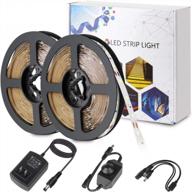
32.8Ft Dimmable LED Light Strip With 600 Daylight White LEDs And UL-Listed Power Supply

37 Review
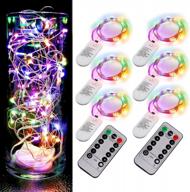
6PCS Multicolor Twinkle Lights W/Remote: 6.5Ft 20 LEDs, CR2032 Battery Powered For Bedroom, Wedding, Patio & Garden Decoration

44 Review
Another interesting products

❄️ Icy Holiday Magic: Instant Snow Powder for Christmas Tree Decoration and Winter Crafts - Makes 10 Gallons of Synthetic Snow!

7 Review
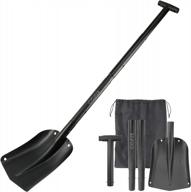
COFIT 43" Retractable Snow Shovel, Aluminium Alloy Snow Sand Mud Removal Tool For Car Outdoor Camping And Garden, Detachable Four-Piece Construction, Black

33 Review

🎄 DuraCasa Christmas Snow Blanket Set: 2 Rolls of 3ft x 8ft Artificial Snow Blankets - Ideal for Festive Decor, Village Backdrops

6 Review

❄️ Super Realistic Fake Indoor Snow Blanket: 15 sqft of Cotton-Like Fluffiness for Winter Mantle Village, Nativity, and Easy Christmas Display Decoration. Hypoallergenic, Flame Resistant, and Eco-Friendly!

7 Review

